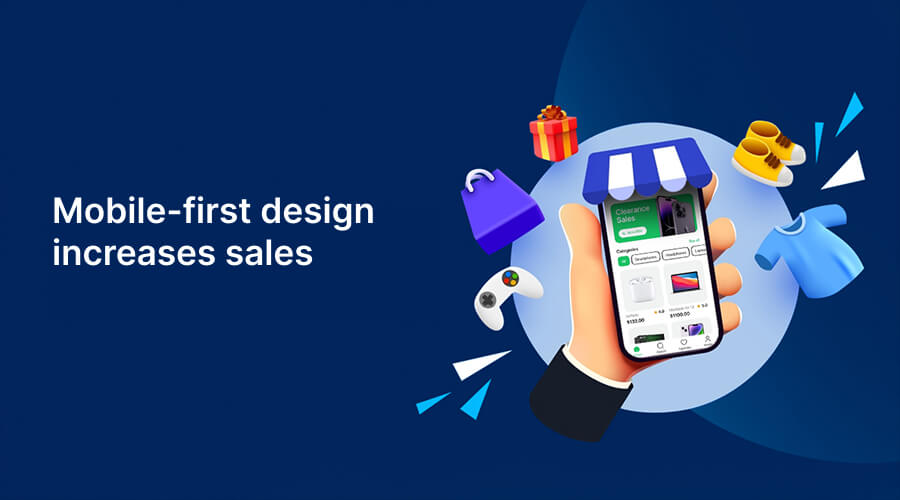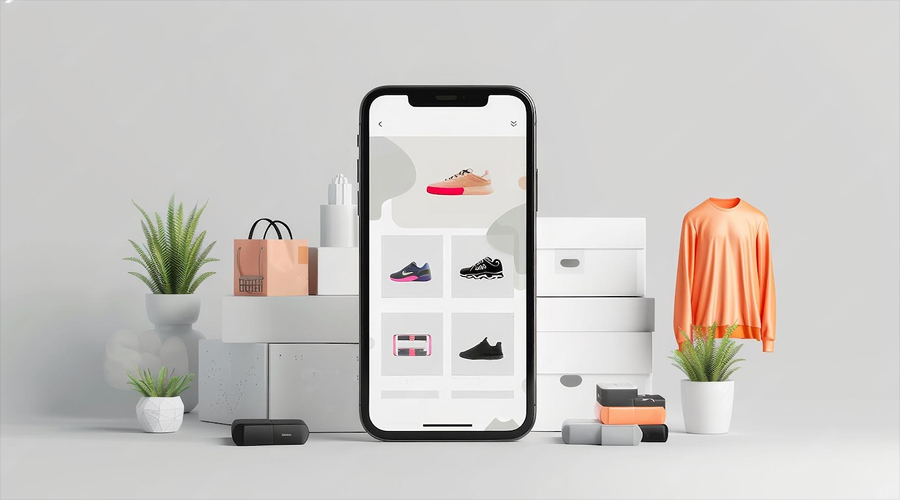
Here are 35 of the most essential web design trends and statistics for 2025-26 to help you figure out actionable techniques that increase your credibility, user engagement, and conversions. Explore everything from visual design and colour schemes to site speed and UX that are the keys to success for businesses in this digital landscape .
The digital landscape is growing more competitive every year. The online marketplace is now getting crowded and businesses are struggling to make the first impression count.This can make or break customer trust. In 2025, approximately 66% of businesses promoted themselves online, and with over 5 billion daily internet users worldwide, having a distinctive presence has become essential. Website design is no longer a mere interface; it defines credibility and drives engagement and conversion.
Check out the 35 latest web design trends and statistics shaping the industry for 2025-26.
35 Latest Web Design Trends and Statistics :
➢ Website aesthetics drive credibility
75% of all internet users judge a website’s credibility based on its overall design. Clean layouts with consistent branding and visual hierarchy directly impact trust, guiding users’ perception of your business.
➢ Mobile optimisation dominates
Over 70% of internet traffic comes from mobile devices. Businesses must prioritise mobile-first design to see higher engagement and conversions.
➢ Page speed impacts sales

A slow-loading page can be a nightmare for users. Slow-loading sites can cost businesses up to $2.6 billion annually. Users will abandon pages that take more than 3 seconds to load. So, emphasising speed as a design priority should be on top of the list.
➢ Video content boosts engagement
Web pages with videos retain users 88% longer than pages without. Short-form video still remains king when it comes to effective attention capture.
➢ Images are essential

78% of shoppers want e-commerce sites to include more product images. Almost everyone will never buy a product that does not have an image. Well-curated visuals communicate brand values and reduce ambiguity.
➢ Colour influences decisions
85% of consumers say that colour affects their purchasing habits and choices. Blue and green evoke trust and success. Orange and purple can deter engagement.
➢ Personalisation increases conversions
54% of users prefer a personalised online experience. Tailoring content to location, browsing history, and user preferences boosts conversions.
➢ Consumers judge trust visually
Over 48% of visitors evaluate credibility through design alone. High-quality visuals, readable typography, and clear navigation signal professionalism.
➢ First impressions are instantaneous
Users decide whether to stay on a website within 0.05 seconds. Every element, including layout and imagery/videos, needs to communicate the value immediately. Otherwise, you risk losing the customer.
➢ Written content must be concise
On average, users spend only 5.59 seconds looking at text content. Breaking down pieces of information into steps not only clarifies the content but also entices the users to discover more.
➢ Multi-screen usage is standard
Most users, about 90%, work with several devices one after another. The design of your site should be such that it is responsive and thus makes it possible for users to have the same level of experience whether they are on a desktop or mobile device.
➢ Live chat enhances service

46% of users indicate that they would rather use live chat than email or social media when looking for support. The presence of the chat option is quite helpful for the users and they become loyal to your brand.
➢ Consumer reviews drive trust
The very best way to strengthen a brand’s credibility and the consumer’s trust is to provide real testimonials and reviews from satisfied customers. More than 88% of users have stated that authentic online reviews are as trustworthy as personal recommendations.
➢ DIY website builders grow
The value of the market for do-it-yourself platforms like Shopify, Wix, Squarespace and Webflow which offer small businesses affordable and functional options has reached $24 billion in the US alone.
➢ Professional design needs investment
A professional website might cost more than $100,000 to develop and this cost usually covers responsive design, fast performance, graphics, and interactive features.
➢ Mobile-first design increases sales

The majority (68%) of the companies that have gone for mobile-first design have been able to report that their revenue grew. The reason for this is Google’s mobile-first indexing.which makes this approach inevitable.
➢ Stepwise content delivery reduces bounce
Breaking content into digestible steps keeps users engaged longer, which in turn minimises bounce rates and increases page interaction.
➢ Slow websites discourage return visits
Fast-loading, intuitive designs directly influence customer retention. 88% of users do not return to sites after a poor experience.
➢ Branding starts with the main image

Users spend nearly six seconds on the website’s primary visual. Selecting imagery that communicates brand identity is a great way to drive engagement.
➢ Responsive websites are expected
75% of users judge a business’s responsibility based on how well its website adapts to different devices.
➢ Progressive web apps (PWAs) reduce costs
Progressive web apps (PWAs) can save businesses over 75% on development and maintenance while providing mobile-like experiences without installing apps.
➢ Shopping experience affects retention
Poor navigation is a great cause of stress for online shoppers and will lead to immediate abandonment. Businesses need to avoid this. Over 90% of shoppers continue browsing a site only if the UX is smooth and intuitive.
➢ Repetition hurts engagement
84.6% of designers cite overcrowded design as a common mistake. Avoid any hidden navigation, inconsistent fonts, and poor spacing to maintain clarity.
➢ Mobile e-commerce rises

M-commerce is projected to account for over 44% of US retail e-commerce sales by the end of 2025, highly emphasising the need for mobile-friendly platforms.
➢ Video backgrounds increase conversions
Switching to video backgrounds can improve conversion rates by 138%, adding motion and interactivity that is highly effective in attracting attention.
➢ High-quality design boosts loyalty
73% of businesses invest in design to differentiate their brand. Consistent visuals, typography, and interface elements strengthen recognition and repeat visits.
➢ User experience impacts competition
89% of consumers switch to competitors after poor website experiences. Businesses will need to have a seamless and appealing UX. Highly essential for retention.
➢ Logos guide navigation
36% of users click the logo to return to the homepage. Placing it in the top-left corner aligns with established user behaviour patterns.
➢ Colour schemes matter

Primary, complementary, or analogous schemes must align with brand messaging, as 39% of all consumers say they appreciate a well-chosen colour palette.
➢ Content readability affects retention
Two-thirds of users prefer visually appealing websites over plain designs. Readable layouts, whitespaces, and clear hierarchy enhance comprehension.
➢ Website maintenance requires a budget
Routine maintenance costs range from $35 to $5000 monthly. This covers most of the essentials, including hosting, SSL certificates, and updates. Neglecting this risks performance and security.
➢ User feedback improves results

Incorporating customer suggestions can increase revenue. ESPN saw a 35% rise after redesigning their homepage using user feedback.
➢ Page load speed is critical
Even a one-second delay can reduce satisfaction by 16%. Optimising server response, image compression, and code efficiency ensures blazing fast load times.
➢ E-commerce UX drives conversion
70% of users abandon carts due to poor UX. Check out simplicity, responsive design, and clear CTAs to reduce friction and increase completion rates.
➢ Cultural targeting shapes design
Different markets will have distinct preferences. Chinese websites favour bright colours, dense layout, and mobile optimization, while Western sites often use minimalist, spacious designs.
Website design now defines both perception and profit. By 2025-26, businesses cannot afford outdated, slow, or unresponsive websites. Integrating these trends can directly increase credibility, engagement, and revenue.
What businesses need to do?
- Prioritise mobile-first and responsive design for all devices.
- Optimise page load speeds to under three seconds.
- Invest in high-quality visuals, video content and more.
- Personalise user experiences through location, behaviour, and preferences.
- Monitor user feedback and iterate regularly to enhance UX.
- Allocate sufficient budget for professional design and ongoing maintenance.
- Align design with cultural and demographic expectations to maximise engagement.
Businesses today need a well-crafted, modern website to serve as the backbone of their digital strategy. Applying these 35 trends positions businesses to stand out in a crowded online market






